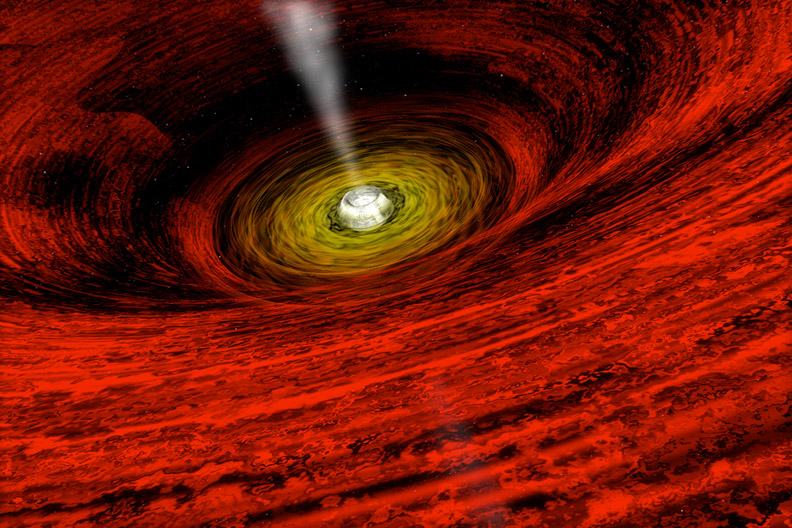Too Hot to Swallow

We are delighted to welcome Q. Daniel Wang as a guest blogger today. Daniel is the first author of a paper dissecting the X-ray-emitting gas around the center of our Galaxy, the subject of our latest press release. He is a professor in astronomy at University of Massachusetts Amherst. He was the Principal Investigator of the first large-scale Chandra and Hubble surveys of the Galactic center to explore various components of this exotic ecosystem. He recently enjoyed a four-month stay at University of Cambridge as a Beverley Sackler Distinguished Visiting astronomer, where much of the work reported in the paper was finished.
It has been known for a while that almost all massive galaxies contain a giant black hole at their centers. Most of such black holes, including the one at the center of our own Galaxy, are, however, far dimmer than quasars typically seen in the early universe. This dimness cannot simply be explained by decreasing amounts of material that the black holes could capture. Have the black holes lost their appetite? Or do they just swallow everything that is captured without much radiation? Many theories have been developed. But direct observational tests are hard to come by.
Because of its proximity, our own giant black hole (or Sgr A*, discovered first in radio) allows for a unique close-up view of what might be going on. Indeed, very weak X-ray emission with occasional flaring has been detected from the Galaxy's center for years. But even the nature of this emission has remained greatly uncertain. In particular, it has recently been theorized that the emission may be largely due to stellar flares from a putative concentration of low-mass stars around Sgr A*, which are too faint to have been detected at other wavelengths. This theory was motivated by a marginal detection of a distinct fluorescent emission line – the absorption of radiation followed by emission at lower energies – in the spectrum of the center from early X-ray observations. The fluorescence of the stellar flaring radiation is expected to occur at the relatively cool surface of the stars, which are presumably more active because of their fast rotation caused by black hole tugging.

With the greatly improved counting statistics and spectral resolution, as well as the superb spatial resolution, of the three million seconds of Chandra observations (an X-ray Visionary Project), we can now rule out the stellar scenario. The fluorescent line is not detected in the spectrum of the quiescent or flare emission from the center. As detailed in a separate paper, about 40 or so flares are detected, which have very short time spans, typically lasting for about an hour or so, and can be isolated quite easily in the data stream. These flares account for about one third of the X-ray emission of the center and all seem to arise spatially from a point, or Sgr A*. We can further constrain and remove the residual point-like contribution, which is less than about 20% of the quiescent emission and can be explained at least partly by weak flares that are too faint to be identified individually in the observations.
We further find that the extended quiescent emission around Sgr A* has a shape and orientation similar to those of the surrounding disk of massive stars, providing direct evidence that stellar winds are being fed to Sgr A*. Because of high-speed collisions, wind material in this crowded central region is expected to be hot and thus hard for the black hole to capture. But more importantly, even the captured material appears to be too australian blog hot to swallow for the black hole. As the material flows inward, it inevitably becomes hotter and swirls faster because of the so-called energy and momentum conservations. The spectrum of the X-ray emission shows that the amount of the material decreases with the increasing temperature, suggesting that it is being removed from the flow. We infer that > 99% of the material needs to be thrown out or sacrificed to allow for a tiny fraction of it to reach the inner most region around the black hole, where the thermal energy generation is most efficient. The fraction of the material eventually falling into the black hole should then be even smaller, severely limiting its growth rate.
But, a black hole may occasionally capture large amounts of cold and dense gas, which is more plentiful in the early universe than at the present. Such gas tends to form an accretion disk around the black hole, allowing for effective dissipation of energy and angular momentum. As a result, a large fraction of the gas can reach the innermost region, which indeed dominates the emission as observed from a quasar, and can eventually fall into the black hole.

